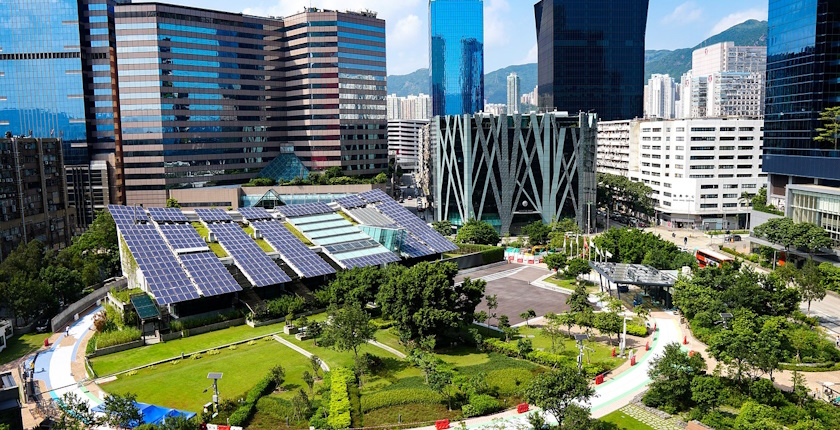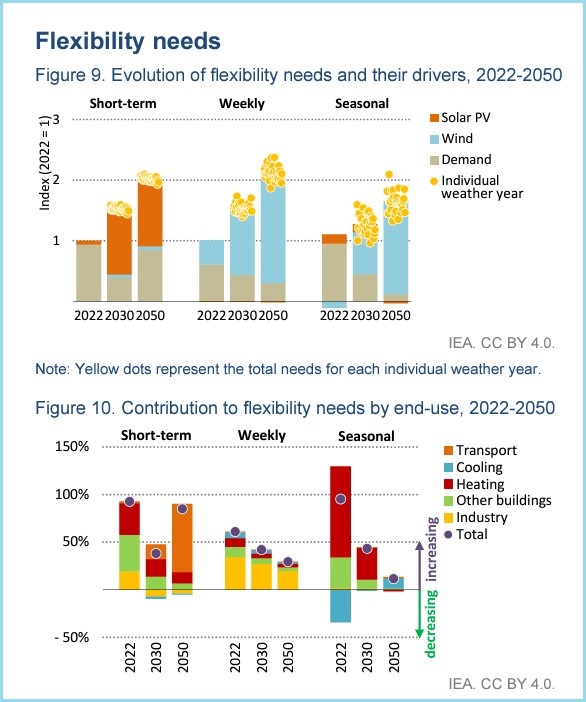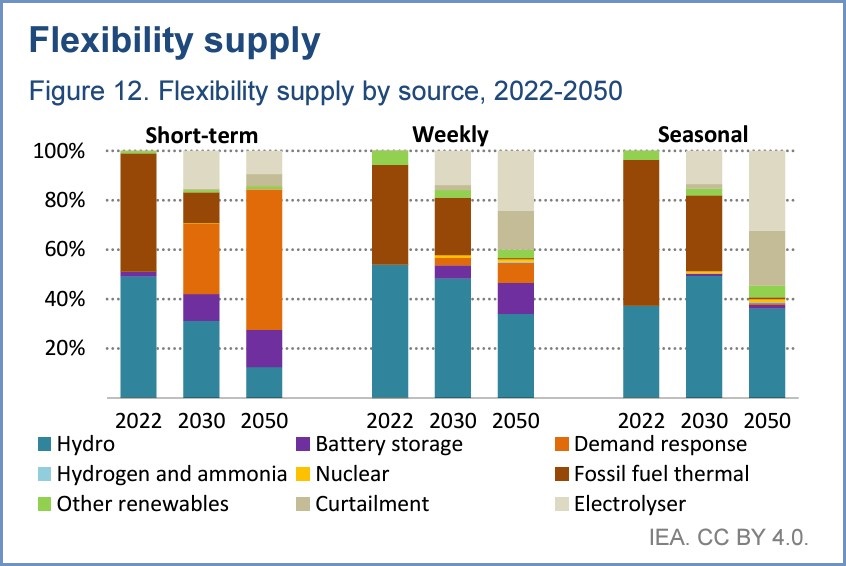
Photo: Jude Joshua from Pixabay
In Europe, short-term flexibility needs are set to rise by 100% and seasonal flexibility needs by about 66% by 2050. They will be increasingly met by demand response, batteries, and hydrogen, however thermal power plants and hydropower will keep their role in providing seasonal balancing, according to IEA’s study on the effects of seasonal variations in demand and supply on the electricity system operations by 2050.
The report Managing the Seasonal Variability of Electricity Demand and Supply outlines the situation in Europe, India, and Indonesia.
In each system, both short-term and seasonal flexibility needs rise considerably until 2050, the International Energy Agency’s study indicates.
Flexibility, currently provided by thermal power plants and hydro, will increasingly come from new sources – demand response and batteries on shorter timescales and hydrogen across weeks to seasons – with low emissions thermal power plants and hydropower plants remaining important providers of seasonal balancing.
IEA’s analysis shows that robust electricity grids, the availability of some dispatchable thermal capacity and, critically, sector coupling with the hydrogen system and flexible operation of electrolysers maintain electricity security while decarbonising.
The changing nature of electricity demand and supply calls for more flexibility

The study’s authors stressed that the nature of electricity demand and supply is changing rapidly with clean energy transitions. Wind and photovoltaics represented 12% of global electricity supply in 2023, but will rise to 40% by 2030 on the path to net zero emissions by 2050.
Combined with new sources of demand for electricity, from electric vehicles to residential heat pumps, power systems will look and operate differently than they have to date and electricity security will become ever more important, the document reads.
IEA said Europe, India, and Indonesia provide many insights into the deep changes between today and 2030 or 2050, as they start from different power systems today, with unique patterns of electricity demand and mixes of electricity sources. Each has charted different courses for their clean energy transitions and are located in different climatic zones.
Seasonal flexibility needs are set to grow faster than electricity demand
In each of the three regions, electricity demand is set to increase substantially over the period to 2050, by over 80% in Europe from 2022 to 2050 and more than 2.5 times in India and three times in Indonesia. Yet, in each region, the need for seasonal flexibility in power systems rises even faster – measured by the highs and lows across the year of net load (total demand minus the output of wind, solar and run-of-river hydropower) which then need to be balanced by dispatchable resources and energy storage.
In Europe, seasonal flexibility needs increase by 60% more than total electricity demand from 2022 to 2050, the report reveals.
Rising shares of wind and solar PV, and changes in patterns of electricity demand are the driving factors of the increased seasonality in all regions.
According to the report, in Europe, increased seasonality is due mainly to the sixfold increase in wind power from 2022 to 2050 and its strong seasonality – with higher production in winter – along with the growth of temperature-sensitive electricity demand including space heating.
The provision of seasonal flexibility comes from traditional and new sources
Currently, hydro and thermal dispatchable power plants manage almost all the flexibility requirements in all three systems, from short-term to seasonal. The IEA said that by 2030, it remains the case in each of the three regions, with over 80% of seasonal flexibility provided by hydro and thermal sources in Europe.
By 2050, hydro remains a key provider of seasonal flexibility, along with low-emissions thermal power plants. However, the phaseout of fossil fuels reduces the overall role for thermal power.
Over the same period, the flexible operation of electrolysers becomes an important part of providing seasonal flexibility as systems are largely decarbonised, the study showed.
But, limited and strategic curtailment of wind and PV generation during abundant production hours also plays an important role in seasonal flexibility provision.
Maintaining electricity security also requires balancing electricity demand and supply on an hour-to-hour basis

According to the report, maintaining electricity security throughout the year also requires balancing electricity demand and supply on an hour-to-hour basis throughout the year.
In each of the three regions, hour-to-hour or short-term flexibility needs are also set to rise faster than electricity demand. In Europe, short-term flexibility needs grow twice as fast as demand, the study finds.
Batteries and demand response are key technologies to address short-term variability
Its authors stressed that batteries and demand response emerge as key technologies to address short-term variability in all systems. Because of their high degree of responsiveness, both have the ability to quickly adjust their operations based on the ramping needs of the system.
Demand response, particularly from smart charging electric vehicles and adjusting when space and water are heated, also helps align demand with the hours when renewables are most abundant, reducing curtailment and fuel costs, and further reducing stress on grids at those times, the report adds.
Thermal power plants continue to play a role in short-term and seasonal flexibility
Despite transition, thermal power plants continue to play a role in short-term and seasonal flexibility and ensuring sufficient supply of electricity. By 2030, the installed capacity of these facilities – running on nuclear energy, bioenergy, hydrogen and hydrogen-based fuels and fossil fuels – will increase in India and Indonesia, while declining in Europe.
By 2050, total thermal capacity declines by 5% to 10% in India and Indonesia, and 40% in Europe, the study underlines.
Clean energy transitions can decrease costs to consumers
The authors stressed that the transition to low-emissions technologies is projected to reduce total power system costs per unit of electricity across the three systems in the long run, in large part due to the low costs of solar and wind.
In an average weather year, the total costs of electricity per unit decline by 15% to 25% in Europe, India and Indonesia from 2022 to 2050.
As the system becomes more capital-intensive and less dependent on the fluctuations of fossil fuel prices, consumers are increasingly insulated from the impact of weather variations on power plant operation and the volatility of fossil fuel prices, according to the report.

Confidence that future power systems can remain reliable is essential

In Europe, the importance of wind power and increasing electrification of space heating create a unique challenge related to periods of low wind and cold temperatures (often referred to as dark doldrums). Having confidence that future power systems can remain reliable during these periods, which occur in the historical record but at irregular intervals, is essential for all stakeholders.
According to the authors, robust electricity grids, the availability of some dispatchable thermal capacity and, critically, sector coupling with the hydrogen system and flexible operation of electrolysers maintain electricity security while decarbonising.
Despite differences and the need for tailored solutions in each region, there are a number of common elements that would support clean energy transitions in all regions, the report finds.
Planning methods as crucial to manage seasonal variability in electricity demand
Among other pieces of advice, the authors stress updated planning methods as crucial to manage seasonal variability in electricity demand, requiring flexibility in existing thermal assets.
Incentivising demand response, storage solutions and removing regulatory barriers are key for system reliability and market efficiency.
Hydro reservoirs, long-term hydrogen storage and robust grid infrastructure play vital roles in managing seasonal variability and ensuring supply security.
Reforms are also necessary to financially reward essential power plants and storage technologies providing a broad set of services to power systems with high shares of variable renewables, the report underlines.









Be the first one to comment on this article.